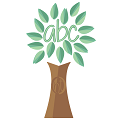English Language Curriculum Design Diary: Day Two
Hello on Day Two
Well, here I am again at the end of another day. Once more, it has not been as productive in the area of curriculum design as I would have liked because of my propensity for distraction, but it has still been productive. My stress level is lower, and I can look forward to waking up tomorrow and trying to be more focused. Some of my distraction today was justified, as it was time to produce my website’s weekly feature, but other things, such as reading about SEO, did not fit with my purpose for this week off from teaching.
My Learning
So what have I gotten done today? Well, I was able to watch a couple of useful videos on backward design as it relates to curricula. Backward design is one of the principles my teaching coach taught me, and I wanted to look at it more in depth. Unfortunately, I was a bit daunted. One of the developers of this method for curriculum design said that one should take small steps toward using this method on a whole-scale basis. But I need something whole-scale now! What to do?
Later, I began reading one of my old text books from my Masters training. A note to those still in training: save those text books. You will wish you had later. The text was “Designing Language Courses: a Guide for Teachers,” by Kathleen Graves. I will include a link to the Amazon page at the end of this post. I read again about how designing a language curriculum has several different pieces, and each piece influences the other. For example, your context will inform your course goals and your materials, your course goals will affect your assessments, which will also affect your materials and goals, and so on.
I also had time to begin reading about the first piece discussed in the book, defining the context of the curriculum. I had been thinking that I had to try and design something that would work for a myriad of different contexts because of the nature of my online teaching. I teach all levels and those who need to improve various skills. But this time around with the text, I wanted to actually do some of the activities, being a kinesthetic learner in many ways. So I thought of two of my students who are both at varying degrees of the beginner level and used them as a context. This brought so much clarity to the process. It is simply unrealistic to expect that I will be able to develop even a foundational curriculum for all my students very quickly. But I must start somewhere. So I will begin at the beginning and design a course for beginners. The aim is to bring them to the point where they can be considered intermediate low in all four skills. This will be more clearly defined when I am ready to use the level indicators I have found published on the web as a guideline for assessment. I am just so relieved to have a direction and a clear context to practice with.
Goals for Tomorrow
As you have seen, focus is a major issue for me, and I have a tendency to change tack. But tomorrow I hope to continue reading through the Graves book, doing some of the activities she lays out. I also hope to read some other relevant texts, including other text books that I have saved. Until then, I hope you have at least learned what not to do on a similar journey. And perhaps you have gained some useful ideas too.
Useful Resources
http://www.amazon.com/Designing-Language-Courses-Guide-Teachers/dp/083847909X
